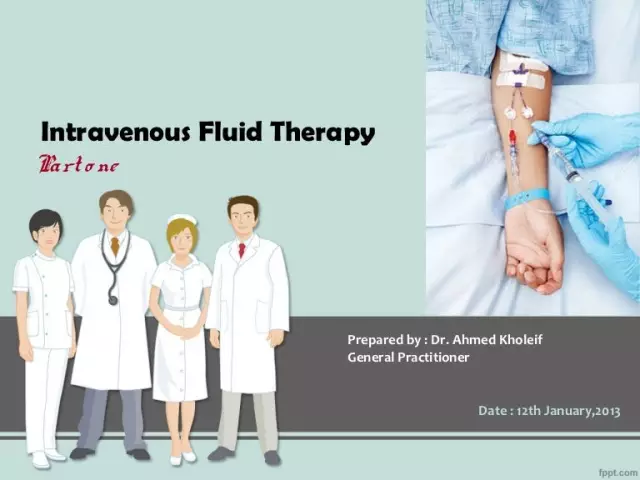- Author Rachel Wainwright [email protected].
- Public 2023-12-15 07:39.
- Last modified 2025-11-02 20:14.
Akkuzid
Instructions for use:
- 1. Release form and composition
- 2. Indications for use
- 3. Contraindications
- 4. Method of application and dosage
- 5. Side effects
- 6. Special instructions
- 7. Drug interactions
- 8. Analogs
- 9. Terms and conditions of storage
- 10. Terms of dispensing from pharmacies
Prices in online pharmacies:
from 400 rubles.
Buy

Akkuzid is a combined drug with hypotensive and diuretic effects.
Release form and composition
Akkuzid is available in the form of film-coated tablets: biconvex, pink, on both sides of the risk (10 pcs. In blisters, 3 blisters in a cardboard box):
- 10 mg + 12.5 mg: oval, marked "PD 222" on one side;
- 20 mg + 12.5 mg: triangular shape, marking "PD 220" on one side;
- 20 mg + 25 mg: round, marked "PD 223" on one side.
Active ingredients in 1 tablet 10 mg + 12.5 mg:
- Quinapril - 10 mg (quinapril hydrochloride - 10.832 mg);
- Hydrochlorothiazide - 12.5 mg
Active substances in 1 tablet 20 mg + 12.5 mg:
- Quinapril - 20 mg (quinapril hydrochloride - 21.664 mg);
- Hydrochlorothiazide - 12.5 mg
Active substances in 1 tablet 20 mg + 25 mg:
- Quinapril - 20 mg (quinapril hydrochloride - 21.664 mg);
- Hydrochlorothiazide - 25 mg
Auxiliary components (10 mg + 12.5 mg / 20 mg + 12.5 mg / 20 mg + 25 mg): lactose monohydrate - 32.348 / 77.196 / 64.696 mg; magnesium carbonate - 35.32 / 70.64 / 7064 mg; povidone K25 - 4/8/8 mg; crospovidone - 4/8/8 mg; magnesium stearate - 1/2/2 mg.
The composition of the film shell (10 mg + 12.5 mg / 20 mg + 12.5 mg / 20 mg + 25 mg): Opadry pink OY-S-6937 (hyprolose, hypromellose, titanium dioxide, macrogol 400, dye yellow and red oxide iron) - 3/6/6 mg; herbal wax - 0.05 / 0.1 / 0.1 mg.
Indications for use
Akkuzid is prescribed for the treatment of arterial hypertension in patients who are shown the combined use of quinapril and hydrochlorothiazide.
Contraindications
Absolute:
- Addison's disease;
- A history of angioneurotic edema as a result of previous use of angiotensin-converting enzyme (ACE) inhibitors, hereditary and idiopathic angioedema;
- Diabetes mellitus, accompanied by chronic kidney disease with moderate renal failure (with a glomerular filtration rate <60 ml / min);
- Renal (with creatinine clearance <30 ml / min) and severe hepatic impairment;
- Anuria;
- Obstruction of the outflow tract of the left ventricle of the heart;
- Refractory hypokalemia, hyponatremia and hypercalcemia;
- Combined use with angiotensin II receptor antagonists or other angiotensin-converting enzyme inhibitors in diabetes mellitus and end-stage target organ lesions, moderate to severe renal functional impairment (at a glomerular filtration rate <60 ml / min / 1.73 m 2), hyperkalemia (> 5 mmol / l), chronic heart failure with low blood pressure;
- Combined use with aliskiren in patients with diabetes mellitus, hyperkalemia (> 5 mmol / l), functional renal impairment (with a glomerular filtration rate <60 ml / min / 1.73 m 2), chronic heart failure with low blood pressure;
- Lactase deficiency, lactose intolerance, glucose-galactose malabsorption;
- Age up to 18 years (the safety profile of Akkuzid for this age group of patients has not been studied);
- Hypersensitivity to the components of the drug, as well as to sulfonamide derivatives.
Relative (Akkuzid is used with caution) in the presence of the following diseases / conditions:
- Previous diuretic therapy and patient adherence to a salt-restricted diet or hemodialysis;
- Conditions accompanied by a decrease in circulating blood volume (including vomiting and diarrhea);
- Chronic heart failure, severe, with or without concomitant renal failure;
- Aortic stenosis, cerebrovascular diseases (a sharp drop in blood pressure during therapy with angiotensin-converting enzyme inhibitors can worsen the course of these diseases);
- Oppression of bone marrow hematopoiesis;
- Severe autoimmune systemic diseases of the connective tissue (including systemic lupus erythematosus, scleroderma);
- Conditions after kidney transplantation, bilateral renal artery stenosis or stenosis of a solitary kidney artery;
- Diabetes;
- Functional disorders or progressive liver disease;
- Major surgical procedures and general anesthesia;
- Gout;
- Closed-angle glaucoma;
- Symptomatic hyperuricemia;
- Water and electrolyte imbalance (hypercalcemia, hypokalemia, hyperkalemia, hyponatremia);
- Combined use with cardiac glycosides and other drugs that can lead to the development of pirouette-type ventricular tachycardia;
- Combined use with other antihypertensive drugs, as well as inhibitors of mammalian Target of Rapamycin (mTOR) and dipeptidylpeptidase (DPP) -4 enzymes;
- Elderly age.
The use of Akkuzid is contraindicated in pregnant women, as well as in planning pregnancy. Women of reproductive age need to use reliable contraceptive methods during therapy. During lactation, breastfeeding should be interrupted.
Method of administration and dosage
Akkuzid is taken orally. Food intake has no effect on the effectiveness of therapy.
Frequency rate of admission - 1 time per day.
The initial dose for patients not receiving a diuretic (regardless of whether monotherapy with quinapril was carried out or not) is 10 mg + 12.5 mg. If necessary, the dose can be further increased to a maximum of 20 mg + 25 mg. Effective blood pressure control is usually achieved with the use of Akkuzid in the daily dose range from 10 mg + 12.5 mg to 20 mg + 12.5 mg.
The initial dose for functional renal impairment of mild severity (with creatinine clearance> 60 ml / min) is 10 mg + 12.5 mg.
Accuzid should not be prescribed as an initial therapy for patients with impaired renal function with creatinine clearance <60 ml / min. With functional disorders of the kidneys of moderate severity (creatinine clearance - 60-30 ml / min), quinapril is prescribed in an initial dose of 5 mg with further titration.
Elderly patients do not need dosage adjustment.
Side effects
In general, the disorders that occurred in patients receiving quinapril therapy in combination with hydrochlorothiazide were transient and mild. They are independent of race, gender, age and duration of therapy.
In more than 1% of patients, the following side reactions were observed: insomnia, rhinitis, dizziness, headache, unproductive persistent cough (after stopping therapy, it goes away on its own), cough, myalgia, fatigue, viral infections, nausea, vomiting, upper respiratory tract infections, bronchitis, dyspepsia, asthenia, symptoms of vasodilation, pharyngitis, chest pain, vertigo, abdominal and back pain.
In 3% and 4% of cases in patients receiving combined therapy, there was an increase in the concentration of creatinine and urea nitrogen (respectively).
Side effects that develop simultaneously with the use of Akkuzid, which are observed in 0.5-1% of cases:
- Cardiovascular system: heart failure, palpitations, tachycardia, marked decrease in blood pressure, orthostatic hypotension, cardiac arrhythmias, myocardial infarction, ischemic stroke, peripheral edema (including generalized), angina pectoris, fainting, hypertensive crisis;
- Digestive system: dryness of the mucous membrane of the mouth and throat, diarrhea or constipation, pancreatitis, flatulence, gastrointestinal bleeding, impaired liver function tests, hepatitis;
- Musculoskeletal and connective tissue: joint pain;
- Hematopoietic system: thrombocytopenia, hemolytic anemia, leukopenia, agranulocytosis;
- Reproductive system: decreased potency;
- Nervous system: increased excitability, paresthesia, drowsiness, depression;
- Urinary system: impaired renal function, urinary tract infections, acute renal failure;
- Respiratory system: sinusitis, shortness of breath;
- Organ of vision: visual impairment;
- Allergic reactions: photosensitivity, skin rash, itching, angioedema, urticaria, anaphylactic reactions, angioedema of the intestine, exudative erythema multiforme, pemphigus, exfoliative dermatitis, Stevens-Johnson syndrome;
- Other reactions: hyperkalemia, alopecia, increased sweating.
Disorders that develop with the use of hydrochlorothiazide:
- Cardiovascular system: orthostatic hypotension, arrhythmias, vasculitis;
- Digestive system: sialadenitis, cholecystitis, anorexia;
- Hematopoietic system: aplastic anemia;
- Allergic reactions: necrotizing vasculitis, purpura, photosensitivity, respiratory distress syndrome (including noncardiogenic pulmonary edema and pneumonitis), anaphylactic reactions up to shock;
- Reproductive system: decreased potency;
- Urinary system: interstitial nephritis, impaired renal function;
- Organ of vision: transient acute myopia, transient blurred vision, acute open-angle glaucoma;
- Metabolism: hypomagnesemia, hypokalemia, hypercalcemia; hypochloremic alkalosis (in the form of dryness of the oral mucosa, thirst, heart rhythm disturbances, changes in mood or psyche, cramps and muscle pain, nausea, vomiting, increased fatigue or weakness) can cause hepatic coma or hepatic encephalopathy; hyponatremia (in the form of confusion, convulsions, lethargy, slowing down of the thinking process, increased fatigue, excitability, muscle cramps), glucosuria, hyperuricemia with the development of a gout attack, hyperglycemia. Thiazide therapy may decrease glucose tolerance, and latent diabetes mellitus may manifest. The use of high doses can lead to an increase in the concentration of lipids in the blood plasma.
Violations recorded as a result of post-marketing research:
- Digestive system: hepatitis, tumors of the gastrointestinal tract, cholestatic jaundice, vomiting, esophagitis, diarrhea;
- Cardiovascular system: deep vein thrombosis, bradycardia, cor pulmonale, vasculitis;
- Musculoskeletal system: myositis, myopathy, arthritis;
- Respiratory system: bronchial asthma, pneumonia;
- Urinary system: albuminuria, hematuria, pyuria, nephrosis;
- Hematopoietic system: anemia;
- Nervous system: phenomena of meningism, gait disturbance, hemiplegia, paralysis, speech disturbances, amnesia;
- Skin: urticaria, petechiae, maculopapular rash;
- Metabolism: weight loss;
- Other reactions: generalized edema, shock, inflammation of the subcutaneous fat, accidental trauma, hernia.
special instructions
- Chronic heart failure: an excessive decrease in blood pressure is possible, proceeding with oliguria, azotemia and, in rare cases, acute renal failure and even death (therapy should be started under the close supervision of a specialist);
- Angioneurotic edema: in cases of laryngeal whistling or angioedema of the glottis, tongue or face, difficulty breathing or swallowing food, therapy should be discontinued immediately and adequate treatment should be prescribed. Antihistamines can be used to reduce symptoms. Medical supervision is required until the edema disappears. With lesions of the larynx, death is possible. In case of swelling of the tongue, glottis or larynx, threatening the development of airway obstruction, an adequate emergency therapy should be carried out, including subcutaneous administration of a solution of epinephrine (adrenaline) 1: 1000 (0.3-0.5 ml). It is also possible to develop angioedema of the intestine (diagnosed using computed tomography of the abdominal region, ultrasound, or at the time of surgery). Symptoms usually resolve after stopping treatment. When combined with inhibitors of enzymes mTOR and DPP-4, the likelihood of developing angioedema is higher;
- Arterial hypotension: most likely the development of symptomatic hypotension with a reduced volume of circulating blood. Transient arterial hypotension is not a contraindication to further administration of Akkuzid, however, its dose may need to be adjusted;
- Agranulocytosis: the development of agranulocytosis and suppression of bone marrow hematopoiesis often occurs in patients with uncomplicated arterial hypertension with impaired renal function, especially with connective tissue diseases (control of the number of leukocytes in the blood is necessary). In cases of the appearance of any symptoms of infection, you should immediately consult a doctor, as this may be a manifestation of neutropenia;
- Systemic lupus erythematosus: its possible exacerbation;
- Functional impairment of the kidneys: prescribe Akkuzid with creatinine clearance less than 30 ml / min, since therapy can contribute to the progression of azotemia. With creatinine clearance of 30-60 ml / min, the drug is prescribed at a lower initial dose;
- Influence of RAAS: suppression of RAAS activity in some cases can lead to functional impairment of the kidneys, in severe heart failure, oliguria and / or progressive azotemia may develop, and in some cases - to acute renal failure and / or death;
- Double blockade of the activity of the renin-angiotensin-aldosterone system (RAAS): signs of manifestation - a decrease in blood pressure, hyperkalemia and changes in renal function (including acute renal failure). It is necessary to avoid the simultaneous use of RAAS-active agents with Akkuzid;
- Renal artery stenosis: possibly a reversible increase in blood urea nitrogen and serum creatinine;
- Liver dysfunction: possible development of hepatic coma;
- Water and electrolyte balance: Serum electrolyte levels should be monitored regularly to detect possible electrolyte disturbances. The development of hyperkalemia (risk factors - impaired renal function, diabetes mellitus and combined use with potassium-sparing diuretics, potassium preparations and / or salt substitutes containing potassium) is possible. The combined use of potassium-sparing diuretics with Akkuzid is not recommended. Against the background of hypokalemia, the toxic effect of cardiac glycosides may also increase (risk factors - liver cirrhosis, forced diuresis, inadequate intake of drugs that improve myocardial metabolism, concomitant therapy with glucocorticosteroids or adrenocorticotropic hormone, combined use with drugs that increase the risk of hypokalemia while taking thiazide diuretics) …Patients with peripheral edema may develop hyponatremia in hot weather;
- Diabetes mellitus: possible impairment of control of plasma glucose concentration. A decrease in plasma potassium may lead to an increase in glucose tolerance;
- Cough: usually persistent, unproductive, disappears on its own after the end of therapy;
- Surgical interventions: possible development of arterial hypotension, eliminated by increasing the volume of circulating blood;
- The volume of circulating blood: in case of insufficient fluid intake, an extreme decrease in blood pressure may develop;
- Angle-closure glaucoma and acute myopia: the main symptoms that occur during the first hours to weeks after starting taking Akkuzid are eye pain or a sharp decrease in vision. Angle-closure glaucoma without appropriate therapy can lead to permanent vision loss. It is necessary to immediately cancel Akkuzid and, if necessary, carry out emergency medical or surgical intervention.
During treatment, especially at the beginning, when driving or performing other work requiring increased attention, care must be taken.
Drug interactions
With the combined use of Akkuzid with certain drugs / substances, the following effects may develop:
- Lithium preparations: a decrease in renal clearance and an increase in serum lithium concentrations, the development of symptoms of lithium intoxication and an increase in the risk of developing undesirable effects (the combination is not recommended, if a combined use is necessary, care must be taken);
- Tetracycline and other drugs that interact with magnesium: decrease in their absorption;
- Ethanol, narcotic analgesics or barbiturates: increased likelihood of orthostatic hypotension;
- Non-depolarizing muscle relaxants: enhancing their action;
- Drugs that increase the content of potassium in the blood: hyperkalemia may develop;
- Diuretics: increased antihypertensive action;
- Hypoglycemic drugs: increasing glucose tolerance;
- Non-steroidal anti-inflammatory drugs: weakening of the diuretic, antihypertensive and natriuretic action;
- Glucocorticosteroids, adrenocorticotropic hormone: increased loss of electrolytes, especially potassium;
- Other antihypertensive drugs: enhancing their action, especially ganglion blockers or beta-blockers;
- Pressor amines: a slight decrease in the action of adrenergic agonists;
- Warfarin (with single use): change in the anticoagulant effect;
- Digoxin: an increased risk of developing symptoms of digoxin intoxication;
- Medicines for the treatment of gout: impaired control of the condition of patients with gout;
- Aliskiren, angiotensin II receptor antagonists or other angiotensin-converting enzyme inhibitors (for diseases / conditions indicated in the contraindications): the combination is not recommended;
- Ion exchange resins: reduced absorption of hydrochlorothiazide;
- Allopurinol, cytostatic agents, immunosuppressants, procainamide: increased risk of leukopenia;
- Drugs with hypotensive action, narcotic analgesics, drugs for general anesthesia: enhancement of the antihypertensive effect of quinapril;
- Cardiac glycosides and other drugs that can lead to the development of pirouette-type ventricular tachycardia: an increase in the likelihood of hypokalemia and an increase in the toxic effect of these drugs (the combination requires caution);
- Gold preparations (intravenous administration of sodium aurothiomalate): the development of a complex of symptoms, including facial flushing, vomiting, nausea, lowering blood pressure and flu-like syndrome;
- DPP-4 and mTOR enzyme inhibitors: increased risk of angioedema (the combination requires caution).
Analogs
The analogues of Akkuzid are: Quinapril, Quinard.
Terms and conditions of storage
Keep out of reach of children at temperatures up to 25 ° C.
The shelf life is 3 years.
Terms of dispensing from pharmacies
Dispensed by prescription.
Akkuzid: prices in online pharmacies
|
Drug name Price Pharmacy |
|
Akkuzid 12.5 mg + 20 mg film-coated tablets 30 pcs. RUB 400 Buy |
|
Akkuzid 25 mg + 20 mg film-coated tablets 30 pcs. 409 r Buy |
|
Akkuzid tablets p.p. 20mg + 25mg 30 pcs. 594 RUB Buy |
|
Akkuzid tablets p.p. 20mg + 12.5mg 30 pcs. RUB 600 Buy |
Information about the drug is generalized, provided for informational purposes only and does not replace the official instructions. Self-medication is hazardous to health!






